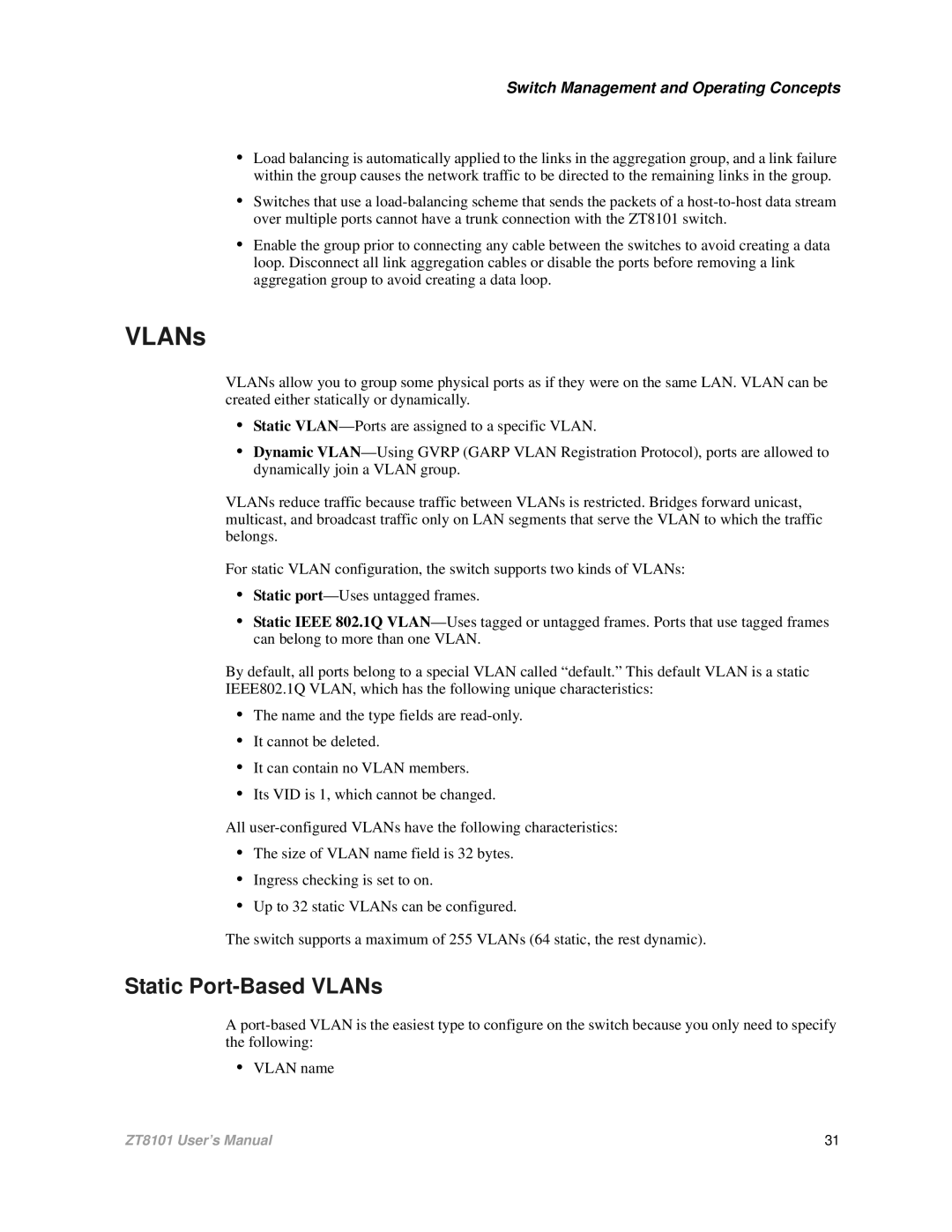Switch Management and Operating Concepts
•Load balancing is automatically applied to the links in the aggregation group, and a link failure within the group causes the network traffic to be directed to the remaining links in the group.
•Switches that use a
•Enable the group prior to connecting any cable between the switches to avoid creating a data loop. Disconnect all link aggregation cables or disable the ports before removing a link aggregation group to avoid creating a data loop.
VLANs
VLANs allow you to group some physical ports as if they were on the same LAN. VLAN can be created either statically or dynamically.
•Static
•Dynamic
VLANs reduce traffic because traffic between VLANs is restricted. Bridges forward unicast, multicast, and broadcast traffic only on LAN segments that serve the VLAN to which the traffic belongs.
For static VLAN configuration, the switch supports two kinds of VLANs:
•Static
•Static IEEE 802.1Q
By default, all ports belong to a special VLAN called “default.” This default VLAN is a static IEEE802.1Q VLAN, which has the following unique characteristics:
•The name and the type fields are
•It cannot be deleted.
•It can contain no VLAN members.
•Its VID is 1, which cannot be changed.
All
•The size of VLAN name field is 32 bytes.
•Ingress checking is set to on.
•Up to 32 static VLANs can be configured.
The switch supports a maximum of 255 VLANs (64 static, the rest dynamic).
Static Port-Based VLANs
A
•VLAN name
ZT8101 User’s Manual | 31 |
